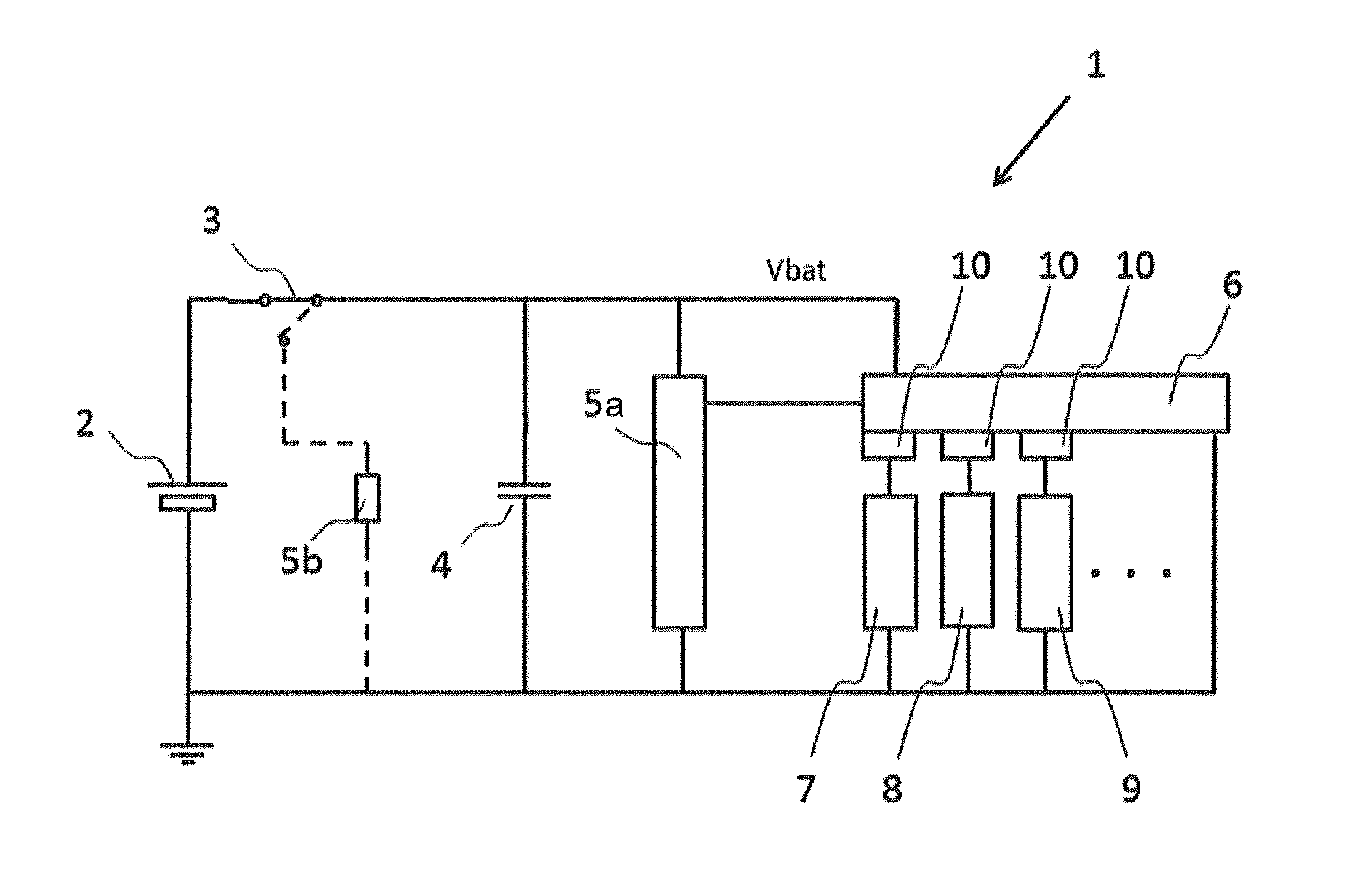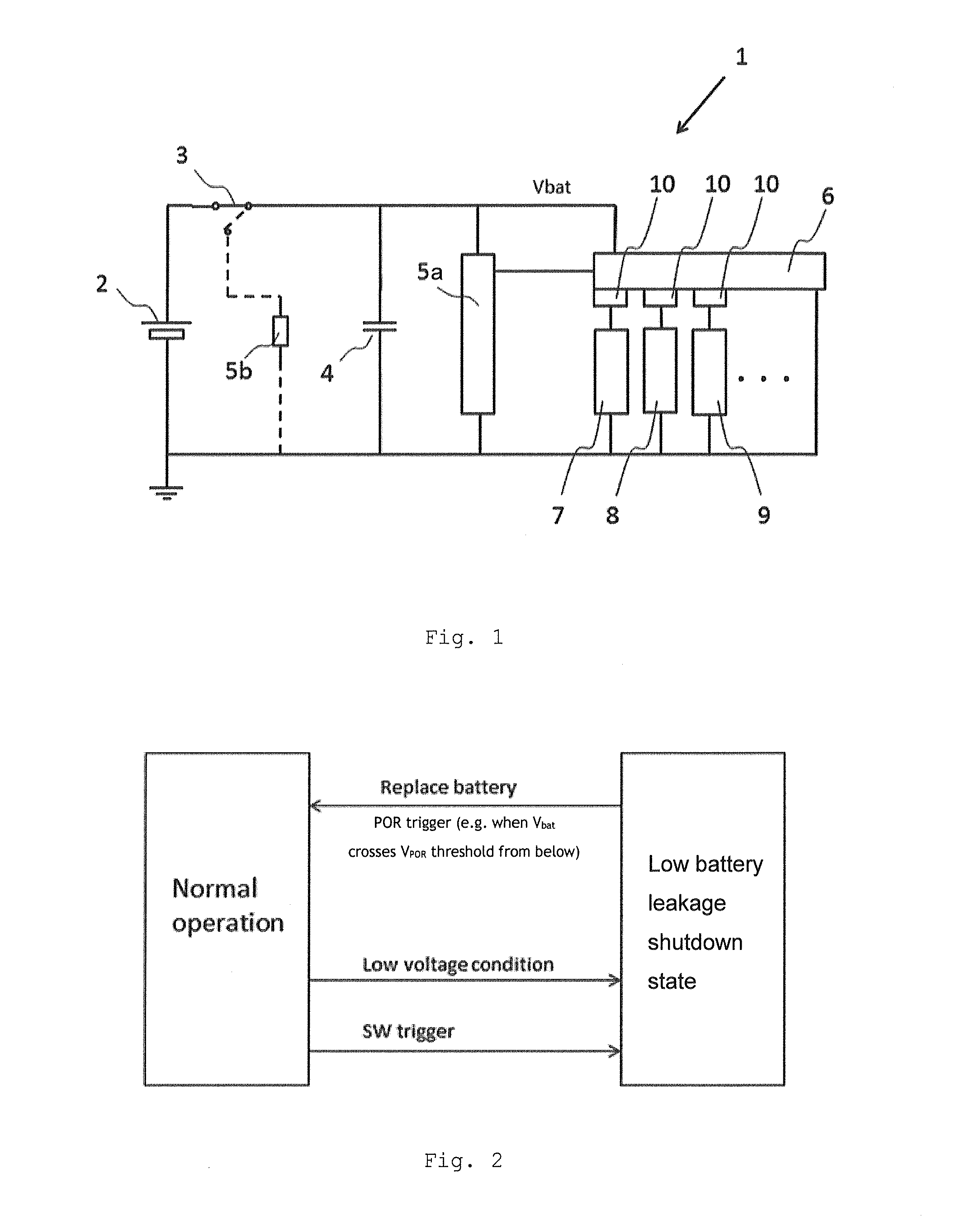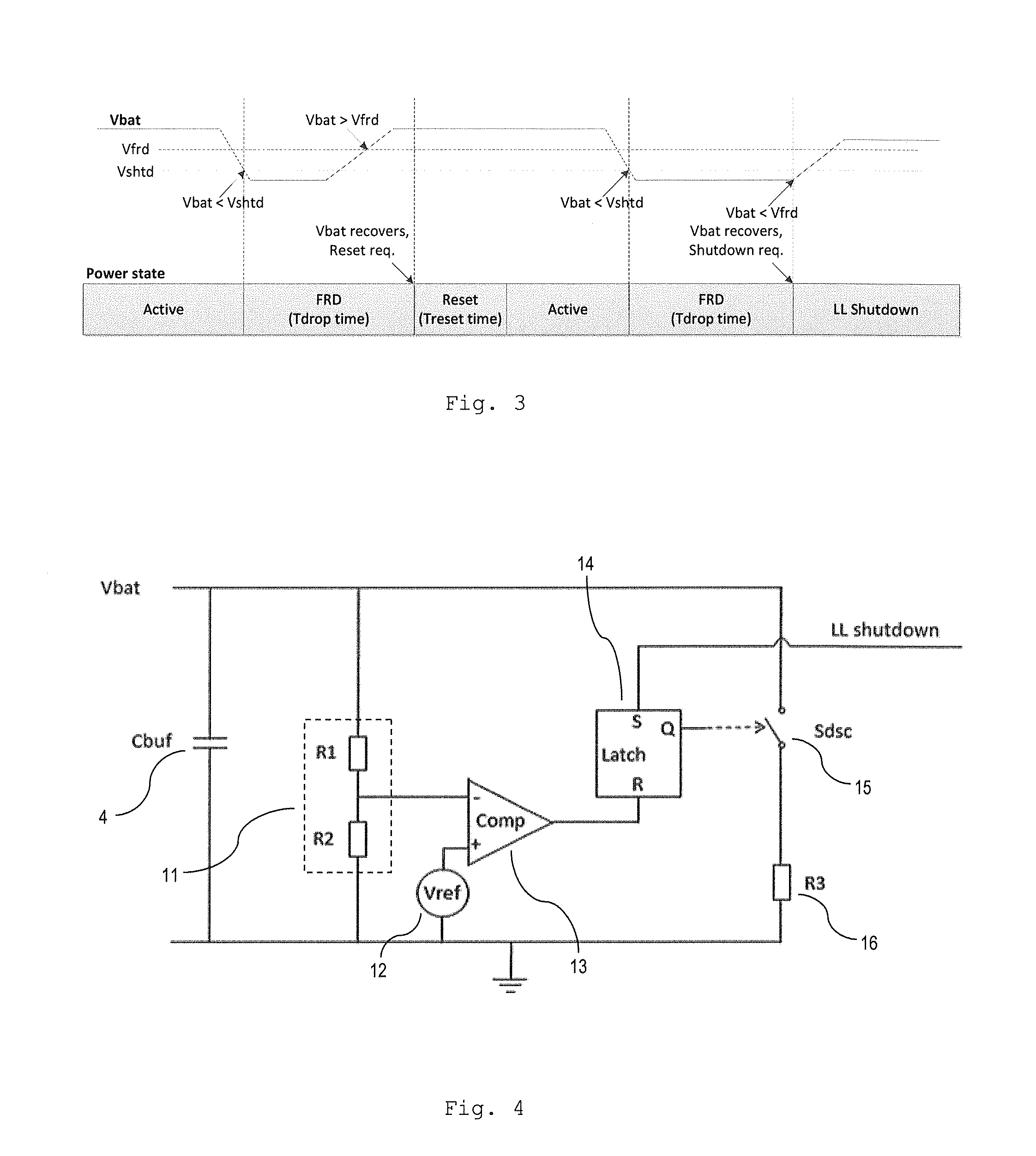Method for operating a hearing device and a hearing device optimized for being powered by a mercury-free battery
a hearing device and battery technology, applied in the direction of battery overdischarge protection, electrical equipment, electric vehicles, etc., can solve the problems of mercury-free zinc air battery cells suffering from gassing, battery leakage, deep discharge and gassing of batteries, so as to prevent battery deep discharge and avoid unwanted deadlock situations
- Summary
- Abstract
- Description
- Claims
- Application Information
AI Technical Summary
Benefits of technology
Problems solved by technology
Method used
Image
Examples
Embodiment Construction
[0051]As previously indicated the present invention is related to a variety of different types of miniature ear-level hearing devices including ear phones, communication devices, hearing aids, hearing enhancement devices and hearing protection devices. All these types of hearing devices have in common that they are powered by a battery and feature a miniature loudspeaker (typically also referred to as “receiver”) in order to output sound into an ear canal of the user. Depending on the specific application, they may further comprise a microphone, a control unit, a signal processing unit, a memory unit and / or a wireless transceiver unit. FIG. 1 illustrates a simplified schematic diagram of an exemplary embodiment a hearing device 1 according to the present invention. It includes a battery 2, which today is usually required to be a mercury-free battery, for powering the hearing device 1. The battery 2 is inserted into a battery compartment of the hearing device 1, which contains batter...
PUM
 Login to View More
Login to View More Abstract
Description
Claims
Application Information
 Login to View More
Login to View More - R&D
- Intellectual Property
- Life Sciences
- Materials
- Tech Scout
- Unparalleled Data Quality
- Higher Quality Content
- 60% Fewer Hallucinations
Browse by: Latest US Patents, China's latest patents, Technical Efficacy Thesaurus, Application Domain, Technology Topic, Popular Technical Reports.
© 2025 PatSnap. All rights reserved.Legal|Privacy policy|Modern Slavery Act Transparency Statement|Sitemap|About US| Contact US: help@patsnap.com



